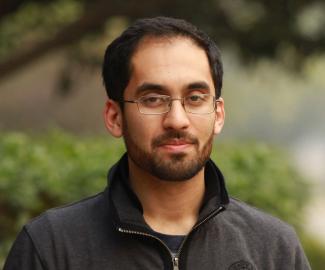Monitoring the Monitors: Using ICT to improve government monitoring in Punjab, Pakistan
In many developing countries, accurate data on resource utilization in public schools, hospitals, and other service facilities are rarely available. This creates two parallel sets of problems: First, a lack of data for process evaluation can lead to misallocations in medicine, human and other service delivery resources. Second, information bottlenecks between service facilities and government supervisors create space for absenteeism, bribe-taking, and resource theft.
Information Communication Technology (ICT) presents several promising solutions. ICT facilitates both the rapid collection and centralization of facility-level data and the communication of data to relevant government managers. In the Monitoring the Monitors (MM) program, the Department of Health, Government of Punjab, has replaced the traditional paper-based monitoring system—which collects data on facility utilization, resource availability, and worker absence—with a smartphone application which centralizes data via General Packet Radio Service (GPRS) in real time. This program was developed by Mr. Zubair Bhatti, a former civil servant, and implemented by Asim Fayaz, a computer science graduate from the Lahore University of Management Sciences. Data are geotagged and time-stamped, and photographs are required to improve authenticity.
Data are instantly made available on a customizable on-line dashboard to senior health officers. Health administrators are required to act on the data to improve process management and address absence. The system also records administrator responses.
The project has four potential benefits relative to many existing Information Communications Technology (ICT) monitoring efforts. First, previous studies consistently suggest that the benefits of improved monitoring, especially with regard to absence, may be short-lived. The deeper incentives faced by civil servants lead programs to be gradually undermined, resulting in no sustained service delivery improvements. The MM product is designed to be incentive-compatible for senior officials, who have strong career incentives to improve service delivery, but in many cases lack actionable information. While previous programs have involved mid-level officials, MM provides a streaming feed on absence and service delivery to senior officials and may therefore increase the chance that MM can be implemented sustainably. Second, the program directly integrates existing institutional monitoring mechanisms; it incentivizes performance for existing monitors, which may potentially provide a more cost-effective means of monitoring several facilities relative to providing a smart phone at each of the 2,745 primary medical facilities in Punjab. Third, the system is designed to collect and provide feedback in real time, so that efforts to undermine the system will be detected immediately, the deterrent effect of which should increase the chances for sustainable implementation. Last, the program is also designed to facilitate the transmission of data critical to process evaluation. It may, therefore, improve resource allocations, creating additional interest for senior government officials.
A final set of research questions the project will address relate to the political economy of patronage networks and corruption. Anecdotal evidence suggests senior elected officials commonly play a role in providing sinecures and in protecting service providers from being held accountable. Keeping systematic data on remedial actions along with information collected as part of this project will enable a test of the hypothesis that such relationships undermine the ability of monitoring innovations to have a sustained effect.







